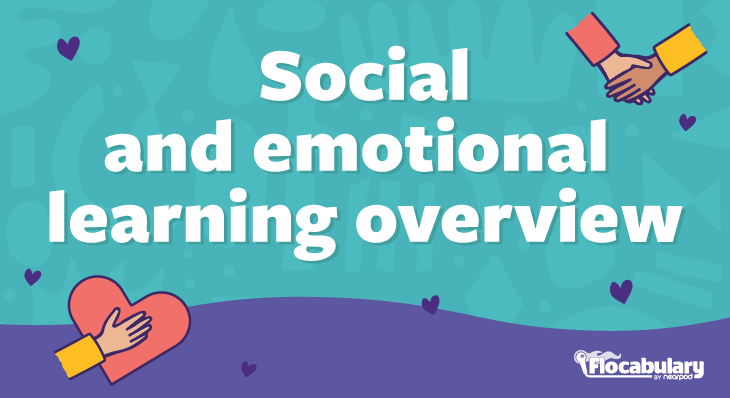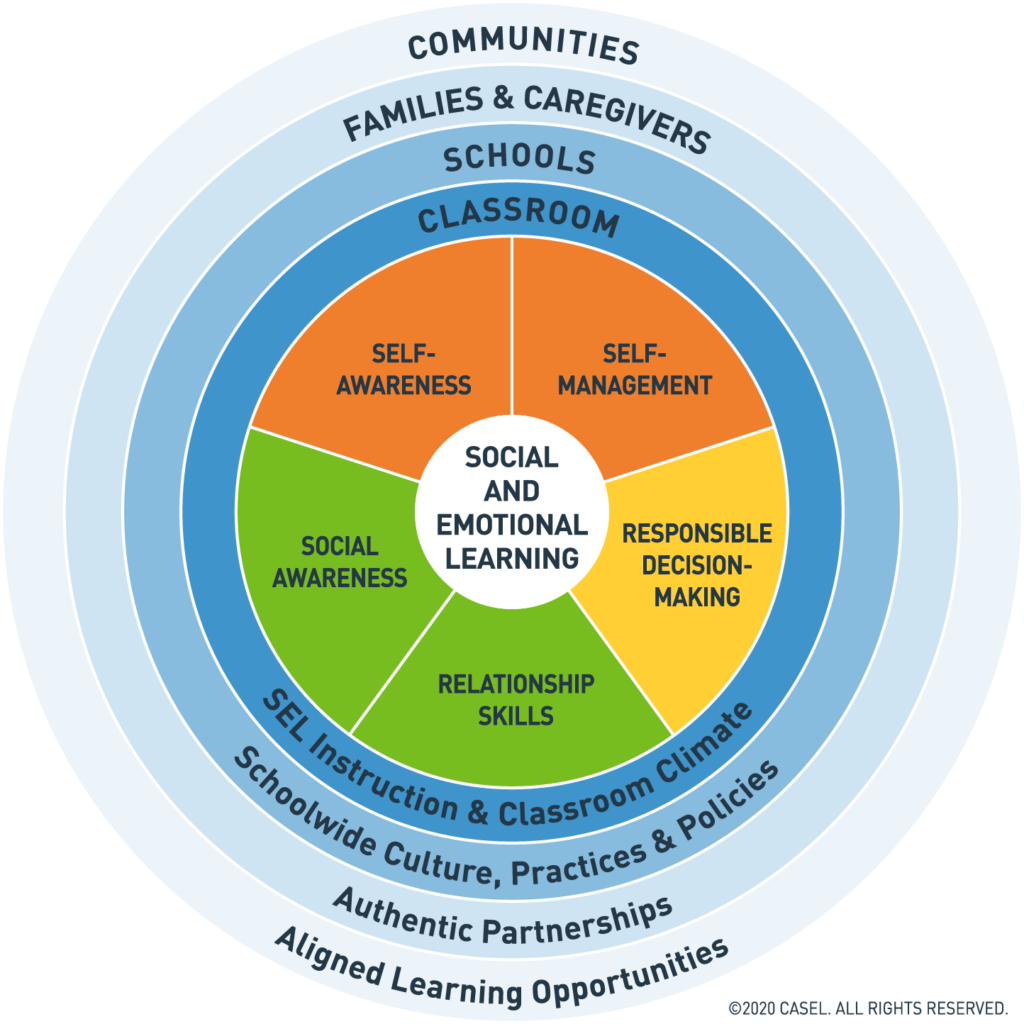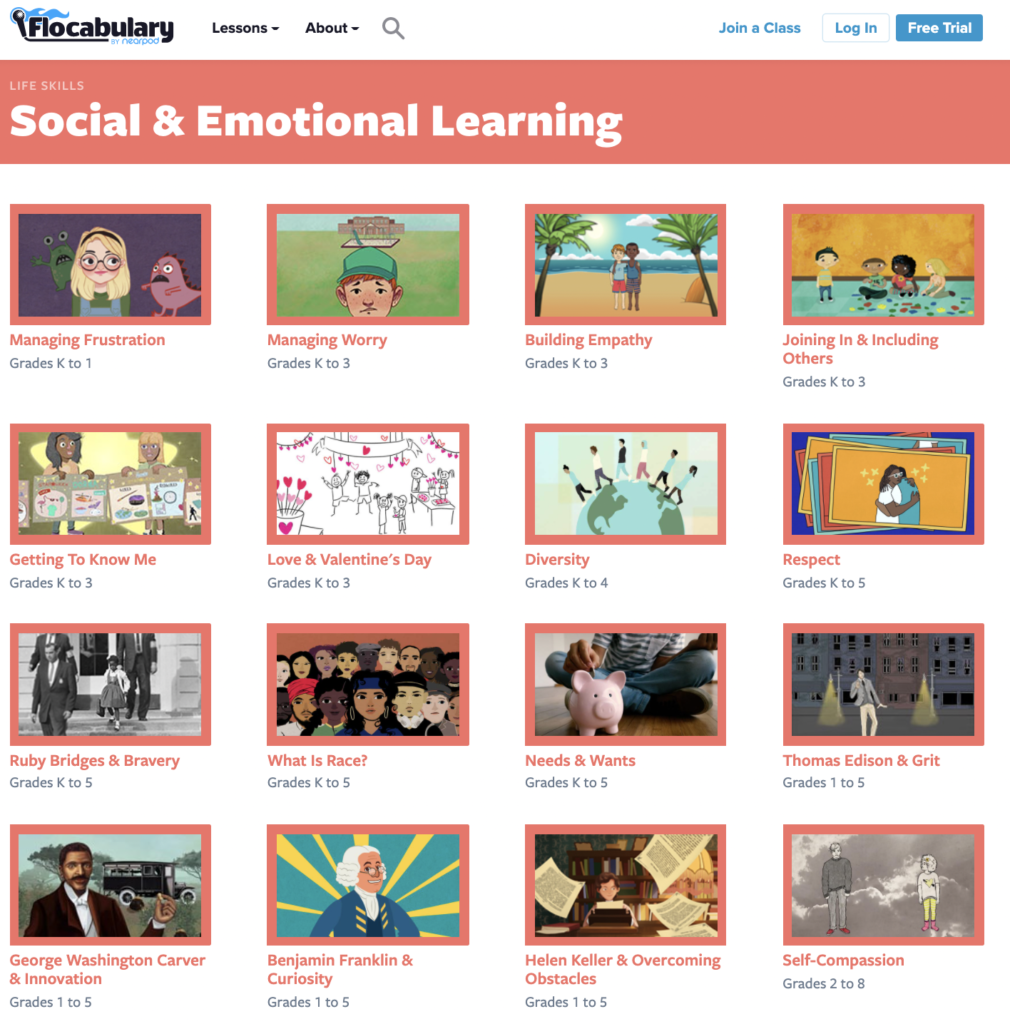
An overview of social and emotional learning in K-12 education
In recent years, the importance of social and emotional learning (SEL) has become increasingly evident in education. SEL aims to help young people develop critical skills like empathy, self-management, and responsible decision-making, which are essential beyond the classroom. Programs aligned with the CASEL social emotional learning framework focus on promoting social and emotional skills that enhance students’ social emotional intelligence, ultimately impacting their academic performance and overall well-being. By incorporating SEL, schools, and communities can support a holistic educational approach that nurtures both academic and personal growth. Explore the five core competencies for social emotional learning for elementary, middle, and high school students, along with Flocabulary resources that can support them.
Here is an example of the type of videos you can find on Flocabulary!
New to Flocabulary? Sign up for an account to access the video lessons and resources mentioned in this article.
What is taught in social and emotional learning?
Social and emotional learning goes beyond academics by fostering empathy, building and maintaining positive relationships, and making responsible decisions.
The major goals of SEL are to teach students:
- Self-awareness: Having a clear perception of your personality, thus allowing you to understand other people, and how they perceive you
- Self-management: Taking responsibility for one’s actions
- Social awareness: Being aware of your surroundings and social circumstances
- Relationship skills
- Responsible decision-making
In order to excel in school and beyond, students need to be able to do more than just study and understand core academic content—they need to be able to communicate and work with their peers, manage time and stress, and have basic problem-solving skills. According to 8 studies, schools that are promoting social and emotional initiatives have seen a 13% increase in students’ test scores and grades. SEL also provides long-term effects on students’ behaviors, attitudes, and skills.
Before we dive deeper, let’s take a step back and learn about the history of social emotional learning and how it found a place in the K-12 education space.
A very brief history of SEL
New research points to social and emotional learning as a key to lifelong achievement. Because this new research continues to pour in, SEL is oftentimes branded as a novel addition to the curriculum. However, SEL is nothing new in education. In fact, it’s been around for millennia.
Social and emotional learning is as old school as Plato and Socrates, where the importance of character and moral education is reflected in the Republic. In the United States, character development was embedded in the foundations of American education by Horace Mann, further expanded by education reformers like John Dewey, and expounded on by education scholars nationwide in the 1990s and 2000s.
Core competencies of SEL

The output of this long-term, national conversation about character development (in addition to the extensive research over the past 30 years) is the Collaborative for Academic, Social, and Emotional Learning (CASEL), whose core competencies serve as tenets to comprehensive SEL instruction in the classroom and beyond.
Here’s how CASEL breaks down social and emotional skill sets, and how students learn these skills beginning in the classroom.
Assessing social and emotional learning
Testing the effectiveness of SEL can be difficult. Experts have differing opinions on how it can be tested, or even if it even can be. It is difficult to test skills that are thought to be inherently learned at home. However, many experts have come up with a 5-point rating system that measures students on a somewhat fluid scale for each skill they should learn. One model from Marzano Research via Edutopia ranks social skills development on a scale of 0-4, with 0 indicating little to no understanding, and 4 as having the most understanding. Partial scores can be given to students to allow fluidity within the system.
Some versions of this assessment also ask parents to evaluate their children, and students to evaluate themselves. This rating system is then, ideally, turned into a conversation with the student to carefully assess their progress.
Flocabulary’s SEL lessons

If you love what Flocabulary brings to the classroom with culturally responsive teaching and vocabulary, you should check out our SEL lesson! Here are some popular picks.
- Managing Frustration
- Managing Worry
- Building Empathy (Preview this lesson below!)
- Joining In & Including Others
- Love & Valentine’s Day
- Respect
- Self-Compassion
- Active Listening
- Mindfulness & Meditation
- Getting To Know Me
Bring Flocabulary into your SEL instruction
Bringing SEL into a school’s curriculum uniformly gives students abilities to understand how to be in charge of their actions, emotions, relationships, and more. Incorporating social and emotional learning into education is a powerful tool for fostering resilient, well-rounded individuals. The benefits of SEL go beyond enhancing academic performance; they prepare young people with essential life skills that improve their relationships, emotional management, and decision-making abilities. By promoting SEL within schools and communities, we can empower students to navigate life’s challenges with confidence and compassion. For educators and decision-makers, embracing the benefits of social emotional learning can be a critical step toward creating supportive, inclusive learning environments where students’ social emotional intelligence can truly thrive.
New to Flocabulary? Sign up for an account to access the video lessons and resources mentioned in this article.
